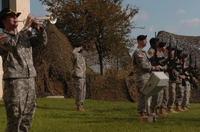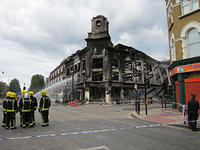-
Critics charge DHS chemical plant security program a failure
In 2006 Congress passed the Chemical Facility Anti-Terrorism Standards program, or CFATS, which set security standards chemical plants had to meet; there are 4,400 chemical plants covered by CFATS, of which 120 are considered especially dangerous, as a chemical release– accidental or as a result of a terrorist act — in any one of them would cause hundreds of thousands of casualties; after four-and-half years and $480 millions spent on CFATS, not a single plant of the 4,400 had been fully inspected; of the 120 riskiest plants, 11 had a preliminary inspection done; not a single site security plan has been approved
-
-
New study probes insider threat in financial services sector
New study found that those committing insider fraud are taking a “low and slow” approach, escaping detection for long periods of time and costing targeted organizations an average of $382,000 or more, depending on how long the crime goes undetected; managers and accountants cause the most damage from insider fraud and evade detection longer
-
-
Global air control system largely defenseless against hacking

The ADS-b system, the multi-billion dollar communication system deployed at airports around the world over the last few years, has two major flaws: first, it has no means of verifying who is actually sending a message, which means that a hacker can impersonate an aircraft and send malicious and misleading information to control towers and to other aircraft; second, the position, velocity, and other information broadcast by aircraft is not encrypted and can be grabbed from the air; a presenter at the Black Hat cybersecurity event showed how it is possible to use the information to plot the route of Air Force Phone on an iPad; these two vulnerabilities can be easily exploited by anyone with modest technical skills and about $2,000 worth of electronics
-
-
DHS offers advice on how to survive shooting sprees
For people who get caught in a shooting spree, such as the one in Aurora, Colorado, DHS offers a survival plan
-
-
Illegal and prescription drugs: “Impossible Situations”
It is now thirty years since President Ronald Reagan, on 14 October 1982, declared the U.S. War on Drugs; this effort to deal with drugs’ “supply side” has led to an ever increasing global policing in the name of curtailing international criminal drug cartels, a policy which may in fact create more national security risks than it allegedly stifles; our ability to face up to and resolve our massive drug consumption at home, the “demand side” for both prescription and illegal drugs, may be drowned by the rhetoric of the political season, but we should note that lost in this political chatter are proven remedies, therapies, and other solutions and alternatives for drug-shattered families torn apart by abundant and cheap drugs, both those which are being smuggled from Mexico and those produced here at home
-
-
Social identification, not obedience, is the motive for unspeakable acts
What makes soldiers abuse prisoners? How could Nazi officials condemn thousands of Jews to gas chamber deaths? What is going on when underlings help cover up a financial swindle? For half a decade or so, the dominant view – following the famous Milgram experiments – has been that people engage in barbaric acts because they have little insight into what they are doing and conform slavishly to the will of authority; new research suggests that we need to rethink obedience as the standard explanation for why people engage in cruel and brutal behavior
-
-
Police officers need sleep for health, performance
Forget bad guys and gunfire: Being a police officer can be hazardous to your health in other ways; a news study found that officers working the evening or night shifts were fourteen times more likely to get less restful sleep than day-shift officers, and also were subjected to more back-to-back shifts, exacerbating their sleep deficit – and that police officers who sleep fewer than six hours per night are more susceptible to a variety of health problems
-
-
Will rising temperatures lead to rising crime rates?
General Strain Theory has become one of the leading explanations for crime, and Emory University’s Professor Robert Agnew, has become its chief architect; he argues that rising temperatures will lead to more strains — increased temperatures, heat waves, natural disasters, serious threats to livelihood (farming, herding, fishing), forced migrations on a massive scale, and social conflicts arising as nations and groups compete for increasingly scarce food, fresh water, and fuel – and more strains invariably lead to rising crime rates
-
-
Study finds stray-bullet shootings frequently harm women and children
Most people killed or wounded in stray-bullet shootings were unaware of events leading to the gunfire that caused their injuries, and nearly one-third of the victims were children and nearly half were female, according to a new nationwide study
-
-
Many criminals who used guns in a crime were not legally barred from possessing firearms

Sixty percent of persons incarcerated for gun crimes in the thirteen U.S. states with the most lax standards for legal firearm ownership were not legally prohibited from possessing firearms when they committed the crime that led to their incarceration
-
-
ACLU-sponsored app keeps police accountable
A new app from the ACLU of New Jersey allows people securely and discreetly to record and store interactions with police, as well as provide legal information about citizens’ rights when interacting with the police
-
-
Fort Hood incident report calls for sweeping changes in FBI’s approach

A report of the 2009 Fort Hood shooting will recommend eighteen specific changes which will make the FBI more likely to detect such insider threats earlier; the report, written by William Webster, the former director of the FBI, will be on the desk of Robert Mueller, the current FBI director, next week; the report’s authors focused on the FBI and the agency’s more than a hundred Joint Terrorism Task Forces (JTTFs) and how they handled and acted on counterterrorism intelligence before and after the shootings … and the FBI’s remedial measures in the aftermath of Fort Hood
-
-
The U.K. August 2011 riots could have been predicted

Researchers studying urban violence have developed a new method which can help city authorities to assess the conditions where conflict could potentially tip into violence; Participatory Violence Appraisal (PVA), used in Kenya and Chile, could have helped to anticipate the tipping points that led to last summer’s riots in cities across the United Kingdom, the researchers say
-
-
NYPD AW119 fleet achieves 20,000 hour milestone
The NYPD has four AW119 helicopters in service; the department’s first AW119 entered service in 2004; the NYPD has become the worldwide law enforcement fleet leader, having achieved more than 20,000 flying hours on the fleet
-
-
Supreme Court deals near-fatal blow to Arizona SB 1070; states’ immigration efforts now in question

In a major victory for the Obama administration, the U.S. Supreme Court yesterday struck down three of the four main provisions in Arizona’s tough SB 1070 immigration law, saying these provisions were pre-empted by federal law; the Court left in place the fourth provision – the one requiring Arizona local law enforcement during routine stops to check the immigration status of anyone they suspect is in the country illegally – but in reading the provision very narrowly, the Court left its implementation open to legal challenges on grounds that it violates racial profiling prohibition and other laws; in any event, the administration moved quickly to make that remaining provision meaningless by pulling back on a program known as 287(g), which allows the federal government to deputize local officials to make immigration-based arrests; the move means that even if local police step up immigration checks, they will have to rely on federal officials to make the arrests
-
More headlines
The long view
Need for National Information Clearinghouse for Cybercrime Data, Categorization of Cybercrimes: Report
There is an acute need for the U.S. to address its lack of overall governance and coordination of cybercrime statistics. A new report recommends that relevant federal agencies create or designate a national information clearinghouse to draw information from multiple sources of cybercrime data and establish connections to assist in criminal investigations.
Twenty-One Things That Are True in Los Angeles
To understand the dangers inherent in deploying the California National Guard – over the strenuous objections of the California governor – and active-duty Marines to deal with anti-ICE protesters, we should remind ourselves of a few elementary truths, writes Benjamin Wittes. Among these truths: “Not all lawful exercises of authority are wise, prudent, or smart”; “Not all crimes require a federal response”; “Avoiding tragic and unnecessary confrontations is generally desirable”; and “It is thus unwise, imprudent, and stupid to take actions for performative reasons that one might reasonably anticipate would increase the risks of such confrontations.”
Luigi Mangione and the Making of a ‘Terrorist’
Discretion is crucial to the American tradition of criminal law, Jacob Ware and Ania Zolyniak write, noting that “lawmakers enact broader statutes to empower prosecutors to pursue justice while entrusting that they will stay within the confines of their authority and screen out the inevitable “absurd” cases that may arise.” Discretion is also vital to maintaining the legitimacy of the legal system. In the prosecution’s case against Luigi Mangione, they charge, “That discretion was abused.”
Are We Ready for a ‘DeepSeek for Bioweapons’?
Anthropic’s Claude 4 is a warning sign: AI that can help build bioweapons is coming, and could be widely available soon. Steven Adler writes that we need to be prepared for the consequences: “like a freely downloadable ‘DeepSeek for bioweapons,’ available across the internet, loadable to the computer of any amateur scientist who wishes to cause mass harm. With Anthropic’s Claude Opus 4 having finally triggered this level of safety risk, the clock is now ticking.”
How DHS Laid the Groundwork for More Intelligence Abuse
I&A, the lead intelligence unit of the Department of Homeland Security (DHS) —long plagued by politicized targeting, permissive rules, and a toxic culture —has undergone a transformation over the last two years. Spencer Reynolds writes that this effort falls short. “Ultimately, Congress must rein in I&A,” he adds.
